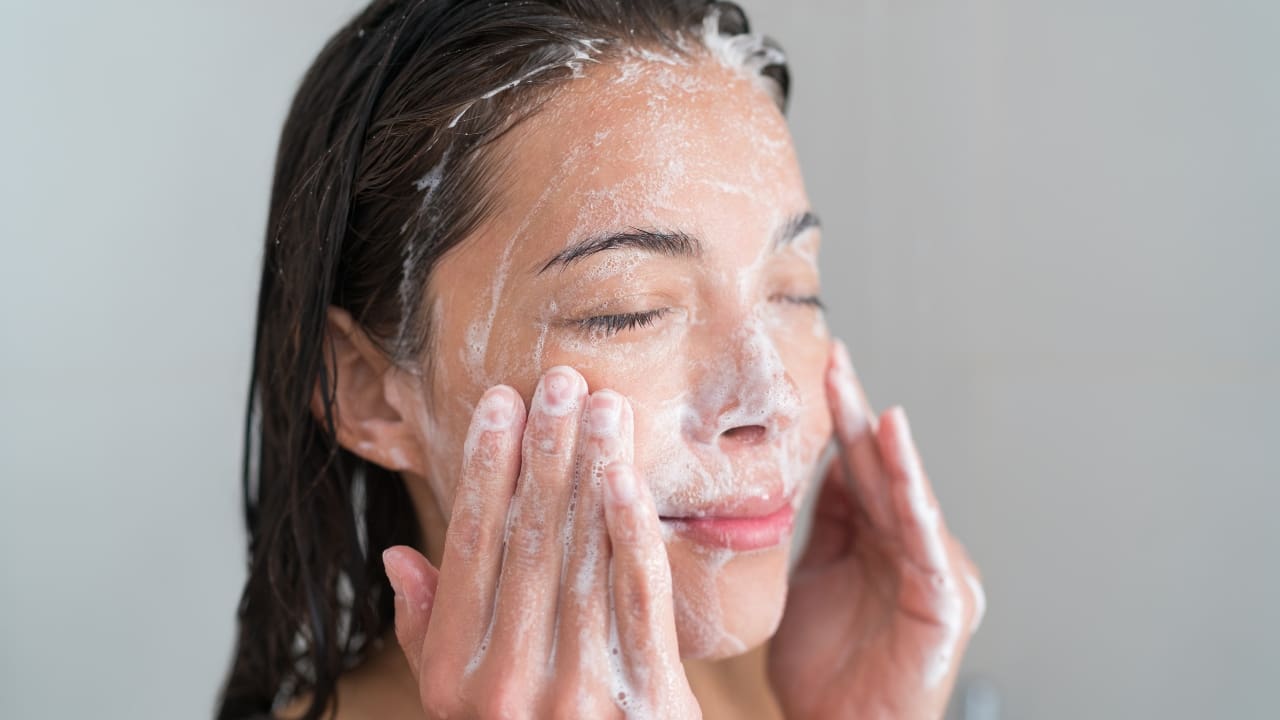Any skincare regimen must include exfoliation as it helps to eliminate dead skin cells and reveal a more vibrant, brighter complexion. But you may find yourself questioning which kind of exfoliation is best: physical or chemical? We’ll discuss the advantages of each of these two approaches, their distinctions, and how to choose the one that best suits your skin type in this blog post. In addition, we’ll feature some amazing Clear Essence Cosmetics products to support you during your exfoliating journey.
Understanding Exfoliation
Exfoliation aids in clearing your skin’s surface of dead skin cells. This procedure can improve the absorption of skincare products, prevent acne, and clear pores. Chemical and physical exfoliation are the two primary forms.
Physical Exfoliation
What is it?
Physical exfoliation is rubbing your skin by hand with a brush, sponge, or exfoliant that has tiny, granular particles in it. Sugar, salt, or microbead scrubs are popular physical exfoliants.
Benefits:
- Immediate Results: Physical exfoliants provide instant smoothness and softness.
- Easy to Use: They are straightforward to incorporate into your skincare routine.
- Variety: Available in various forms like scrubs, brushes, and exfoliating pads.
Drawbacks:
- Potential for Over-exfoliation: Scrubbing too hard or too often can damage the skin barrier, leading to irritation and sensitivity.
- Uneven Exfoliation: The pressure applied can vary, resulting in uneven exfoliation and potentially missed spots.
Chemical Exfoliation
What is it?
Acids or enzymes are used in chemical exfoliation to remove dead skin cells. Alpha hydroxy acids (AHAs), beta hydroxy acids (BHAs), and fruit enzymes from pineapple and papaya are common examples of chemical exfoliants.
Benefits:
- Even Exfoliation: Provides consistent and even exfoliation without the need for scrubbing.
- Gentler on the Skin: Often less abrasive than physical exfoliants, reducing the risk of irritation.
- Additional Benefits: Many chemical exfoliants also offer anti-aging benefits, such as reducing fine lines and improving skin texture.
Drawbacks:
- Adjustment Period: It might take time for your skin to adjust, and you might experience some initial redness or peeling.
- Sensitivity to Sun: Chemical exfoliants can make your skin more sensitive to the sun, necessitating diligent use of sunscreen.
Choosing the Right Exfoliation for Your Skin Type
For Sensitive Skin:
- Best Option: Chemical exfoliation with gentle AHAs like lactic acid or enzymes.
- Why: These are less likely to cause irritation compared to physical scrubs.
- Recommended Product: Lemon Plus Vitamin C Body Soap Scrub
For Oily or Acne-Prone Skin:
- Best Option: Chemical exfoliation with BHAs like salicylic acid.
- Why: BHAs penetrate deep into the pores, helping to clear out excess oil and prevent breakouts.
- Recommended Product: Platinum Extra Strength Medicated Cleansing Bar plus Exfoliants
For Dry or Mature Skin:
- Best Option: Chemical exfoliation with AHAs like glycolic acid.
- Why: AHAs help to improve hydration and stimulate collagen production, addressing dryness and signs of aging.
- Recommended Product: Clear Essence Anti-Aging Complexion Soap with Alpha Hydroxy Acid
For Normal or Combination Skin:
- Best Option: A combination of both, used alternately.
- Why: This skin type can typically handle both forms of exfoliation, allowing you to enjoy the benefits of each.
- Recommended Products: Lemon Plus Vitamin C Body Soap Scrub (physical) and Platinum Extra Strength Medicated Cleansing Bar plus Exfoliants (chemical)
How to Incorporate Exfoliation into Your Routine
Frequency:
- Physical Exfoliation: Generally 1-2 times per week.
- Chemical Exfoliation: Can vary from daily to a few times a week, depending on the product and your skin’s tolerance.
Application Tips:
- Physical Exfoliants: Apply to damp skin and use gentle, circular motions. Avoid over-scrubbing.
- Chemical Exfoliants: Apply to clean, dry skin. Follow the product instructions regarding leave-on time and follow-up skincare.
Exfoliation by chemical and physical means each has advantages and disadvantages of their own. Understanding your skin type is essential for making well-informed decisions. You may have smoother, brighter, and healthier-looking skin by using products like those from Clear Essence Cosmetics and selecting the proper exfoliating technique. Always remember that moderation is key. Excessive exfoliation might damage your skin, so pay attention to your skin’s signals and make necessary adjustments. Happy exfoliating!
- The Role of Vitamin D in Skincare: Nourish Your Skin with Clear Essence - February 27, 2025
- How to Deal with Sunburn: Soothe and Restore Your Skin with Clear Essence - February 12, 2025
- The Impact of Hormones on Skin Health: Clear Essence Solutions for Every Stage - January 28, 2025
